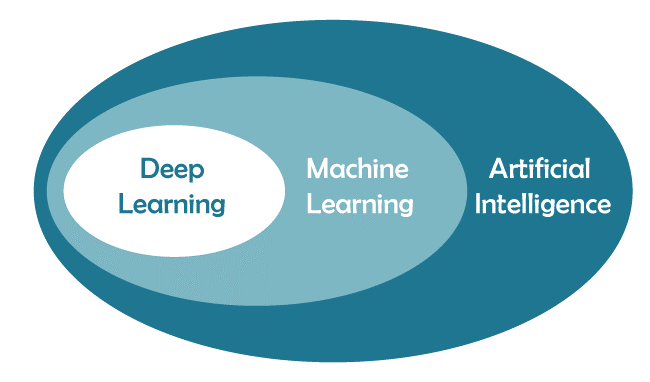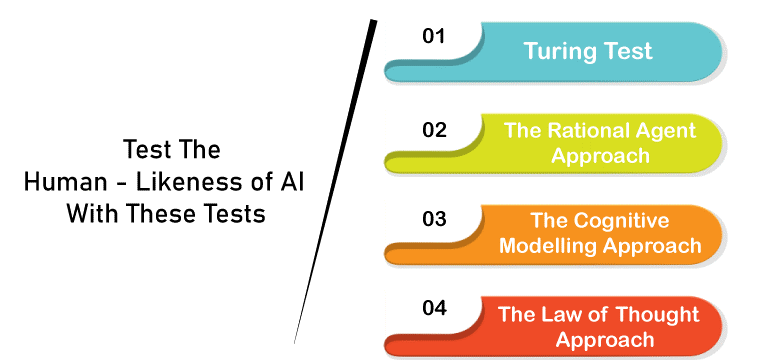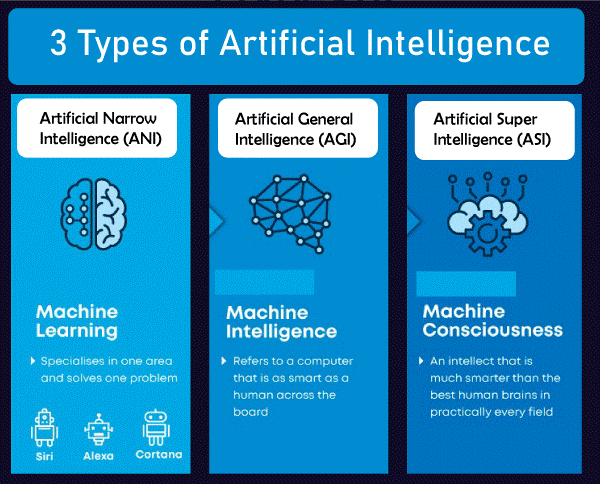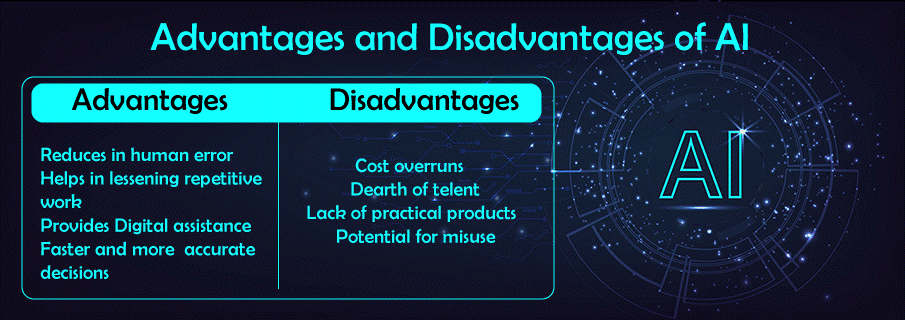Artificial Intelligence DefinitionArtificial intelligence is the capacity of a computer or robot to accomplish operations frequently carried out by intelligent people. As yet another instance of AI,

Someone who isn't an expert but is only passingly familiar with technology would link it to robots. Artificial intelligence is often described as a terminator-like entity capable of behaving and thinking for itself. According to an expert in the field, artificial intelligence is a set of algorithms capable of producing results without the need for explicit training. The phrase "artificial intelligence" refers to the intelligence exhibited by machines. Artificial intelligence is now widely used in today's society. It involves artificial intelligence being imitated by technology intended to observe and mimic human behavior. These machines can correct their mistakes and typically carry out human duties. The development of AI and other advancedtechnology will significantly impact our quality of life. Nowadays, everyone wants to interact with AI technology in some way, whether through work or as a consumer. The Behavior of Artificial Intelligence
Even if we develop AI to the point where it can behave like a human, how can we be certain that it will do so? The following criteria can be used to determine how human-like an AI being has always been:
Let's examine these methods' effectiveness in more detail: Artificial Intelligence Turing TestAccording to the Turing Test concept, an artificial intelligence entity must converse with a human agent. Idealistically, the human agent shouldn't be able to infer that they are speaking with an AI. To achieve this aim, artificial intelligence must possess the following qualities: Successful communication requires the use of natural language processing. Its memory is Knowledge Representation. Automated reasoning uses previously stored data to respond to inquiries and arrive at new conclusions. Machine learning to recognize patterns and adjust to changing conditions. A Method Using Cognitive Modeling:This strategy tries to develop an artificial intelligence model based on human cognition, as its name indicates. The essence of the human mind can be captured in one of three ways:
Applying the Laws of Thought:The wide collection of logical rules known as The Laws of Thought governs how our minds work. The same rules may be formalized and applied to algorithms for artificial intelligence. This approach has the drawback that there may be important distinctions between solving a problem in theory (strictly according to the norms of thinking) and accomplishing it, necessitating applying contextual subtleties. In addition, if there are fewer elements, an algorithm might be unable to replicate all of the actions humans take when we are unsure about the outcome. The Approach of the Rational Agent:Given the situation, a rational agent takes action to get the best result possible. The Laws of Thought concept holds that an entity must respond to logical assertions. However, there are situations with no logically optimal course of action since there are several possible solutions with different results and related compromises. Making the best decision conceivable given the conditions is the goal of the rational agent method. It implies that it is a far more flexible and dynamic agent. Now that we know how artificial intelligence (AI) systems may be created to behave like people let's look at how these systems are made. Artificial Intelligence (AI) ProcessDeveloping an AI system involves translating human traits and skills into a computer and utilizing its processing power to achieve feats beyond our comprehension. Knowing the multiple sub-domains of artificial intelligence and how those domains may be applied to different industrial sectors requires a thorough understanding of how the technology works. Another choice is to engage in a course on artificial intelligence to help you understand it completely. Learning MachinesML teaches a computer to make judgments and choices based on previous experience. It identifies patterns and looks at previous data to comprehend the importance of these data points and reach a probable conclusion without depending on the human experience. Automation may help businesses make faster decisions by automating the analysis of data and the drawing of conclusions. You may enroll in a free machine-learning course for beginners to master the fundamentals. Learning in-depth One method for ML is deep learning. It trains a computer to interpret inputs through layers to categorize, infer, and forecast the outcome. It trains a computer to interpret inputs through layers to categorize, infer, and forecast the outcome. The Neural Networks:These systems function like the neural cells in humans. These algorithms process the data by identifying the connections between various underlying components, just like the human brain does. The Logic for Natural Language Processing:NLP focuses on the reading, understanding, and interpreting abilities of computers. A computer responds correctly once it understands what the user is attempting to convey. Employing Computer Vision:computers with vision Attempt to comprehend an image by dissecting it and examining various item features. It helps the computer categorize and learn from images, enabling it to deliver better findings based on earlier discoveries. Cognitive Computing:Cognitive computing algorithms attempt to simulate the human brain's functioning and produce the intended results by analyzing text, audio, pictures, and other inputs the way a human would. Take advantage of free classes on applications of artificial intelligence. Different Types of Artificial IntelligenceOnly some types of AI operate in the fields mentioned earlier simultaneously. Artificial intelligence entities differ because they were developed to serve different purposes. Type 1 and Type 2 kinds of AI exist (Based on functionalities). Here is a brief description of the first type. 
Artificial Intelligence: Three Forms
Artificial Narrow Intelligence (ANI):Currently, this is the most common form of AI on the market. These artificial intelligence systems were created with a specific job and a single issue in mind. By definition, they are limited in what they can accomplish, such as suggesting a product to an online buyer or making weather predictions. There is only one kind of artificial intelligence in existence right now. They frequently match or even surpass human performance in a variety of circumstances. However, they only perform effectively in very restricted environments with certain limitations. You may also improve your abilities by taking Great Learning Academy's free Introduction to Artificial Intelligence online course. In this course, you will acquire all the essential knowledge needed to pursue a career in artificial intelligence. Artificial General Intelligence (AGI)?The concept of artificial global intelligence (AGI) is still hypothetical. A human-level cognitive capability in a wide range of areas, including language processing, picture processing, computational functioning, and reasoning, is what is meant by artificial intelligence (AI). We still have a long way to go before creating an AGI system. An AGI system needs the cooperation and interaction of millions of Artificial Narrow Intelligence units to mimic human reasoning. It took them 40 minutes to recreate only one second of neural activity, even with the most advanced computer systems and infrastructure, like IBM's Watson or Fujitsu's K. It demonstrates the immense interconnection and complexity of the human brain and the difficulties of developing an AGI with our current technologies. How Does Artificial Super Intelligence (ASI) Work?Even though we're almost in science fiction territory, ASI represents AGI's logical progression. In every aspect, a system with Artificial Super Intelligence (ASI) would be superior to humans. This includes making judgments, acting on them sensibly, and even carrying out actions like perfecting one's skill and developing strong emotional connections. Once we achieve Artificial General Intelligence, AI systems can advance quickly into industries that humans may have never even considered. Even if there wouldn't be much of a difference between AGI and ASI (some argue there wouldn't be much because of how rapidly AGI would learn), the long route to AGI itself makes this seem like a far-off concept. Artificial Intelligence and its Strengths and Weaknesses:Strong artificial intelligence and Weak artificial intelligence are the other two types that extensive research in artificial intelligence has shown. John Searle created the phrases to distinguish between the performance levels of various AI devices. Here are some of their main distinctions from one another. Strong Artificial Intelligence:
Weak Artificial Intelligence:
What Benefits Makes Artificial Intelligence Offer?
Without a doubt, technology has raised our standard of living. AI and other technologies have influenced several industries, including fraud detection, mobile banking, and the recommendation of music and maps. Between advancement and obliteration is a thin line. Every tale has two sides, and artificial intelligence is no exception. Let's examine a few benefits of artificial intelligence: Artificial Intelligence Benefits (AI):
Let's look more closely. Artificial Intelligence Requirements:
Artificial Intelligence in Daily Life:The following is a list of practical uses for artificial intelligence:
Artificial Intelligence Examples:
Next TopicAttitude Definition
|
 For Videos Join Our Youtube Channel: Join Now
For Videos Join Our Youtube Channel: Join Now
Feedback
- Send your Feedback to [email protected]
Help Others, Please Share









